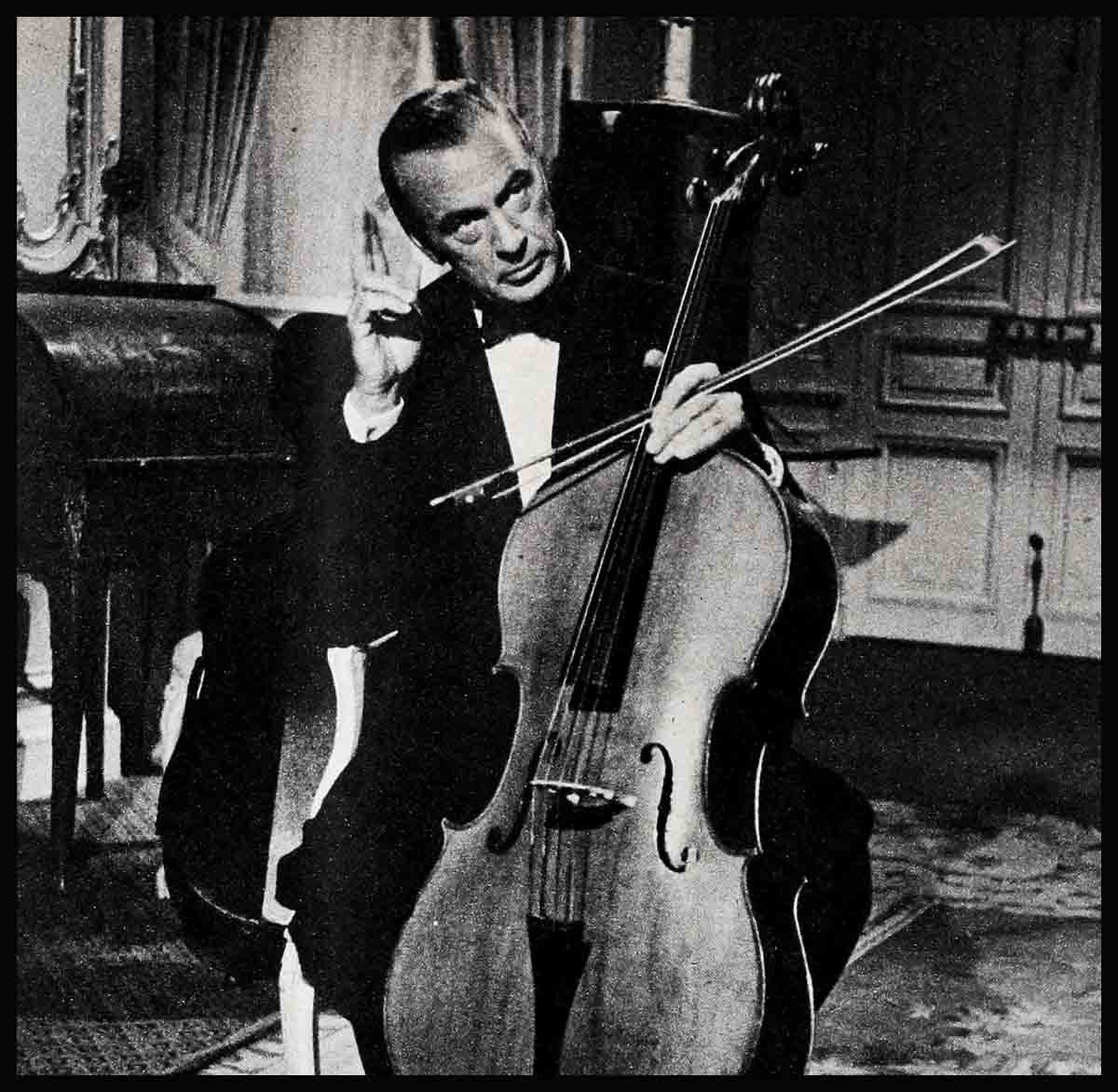
Stars Hollywood Couldn’t Beat
“Stardom doesn’t last,” a new player named Fredric March confided to Photoplay in 1927. Bette Davis put it another way. “I don’t want to own anything I can’t pack in a trunk,” she proclaimed upon first arriving in Hollywood. Yet March, after thirty years, is going stronger than ever, and Bette’s trunk has been gathering dust for lo, these many years.
At one time or another, every movie personality now recognized as an all-time “great” was labeled a “fallen star.” At least two of them—Hepburn and Crawford—were called “box office poison” and bluntly invited to leave. How could these stars weather the storms that have permanently floored others?
Sam Goldwyn lavished all the wizardry at his command on Anna Sten, but the public wasn’t buying. Luise Rainer collected two Oscars for her second and third film roles, became the talk of Hollywood, and shortly thereafter disappeared from the scene. Today it’s doubtful if most moviegoers know who she was.
So what special qualifications do some stars possess who have taken the count, yet come up from the canvas to fight their way back to the top?
There are probably as many answers as there are people, but individuality certainly stands high on the list.
Individuality and Katharine Hepburn seem to go hand in hand. After being fired and rehired (or just plain fired) from her first nine Broadway shows, Kate scored a hit as an Amazon queen in “The Warrior’s Husband” (“I never made a hit until I was in a leg show,” she once cracked), and was promptly signed by David O. Selznick for “Bill of Divorcement” with John Barrymore. The screen test was a good example of typical, no-nonsense Hepburn thinking. “I’ve seen too many girls make screen tests with juveniles, only to have the juveniles hired,” she concluded. Consequently, the actor playing opposite her sat hunched in a huge chair with his back to the camera while the Hepburn assets got full play.
Traveling west via train, some steel filings flew into her eye, refused to leave, and by the time she reached Pasadena, the offended eye had swelled to menacing proportions and its mate was inflamed to a vivid red, exactly matching the color of her hair. Blue suit, pancake straw hat and freckles complete the picture. “Ye gods,” muttered the late Myron Selznick, the actress agent, to his companion as they met Kate at the train. “Did we stick David fifteen hundred for this?” Hollywood took one look at Kate’s bizarre ways and unique wardrobe and promptly labeled her a phony. (Among other things she preferred slacks, convinced that putting her legs up after a meal was a great aid to digestion.) Kate helped things along. An interview for fan-magazine writers (“they asked a lot of asinine questions so I gave them asinine answers”) produced this interesting information—Q. Are you married? A. I don’t remember. “Publicity?” she barked at a much-nettled RKO press department. “Not for me—none at all!”
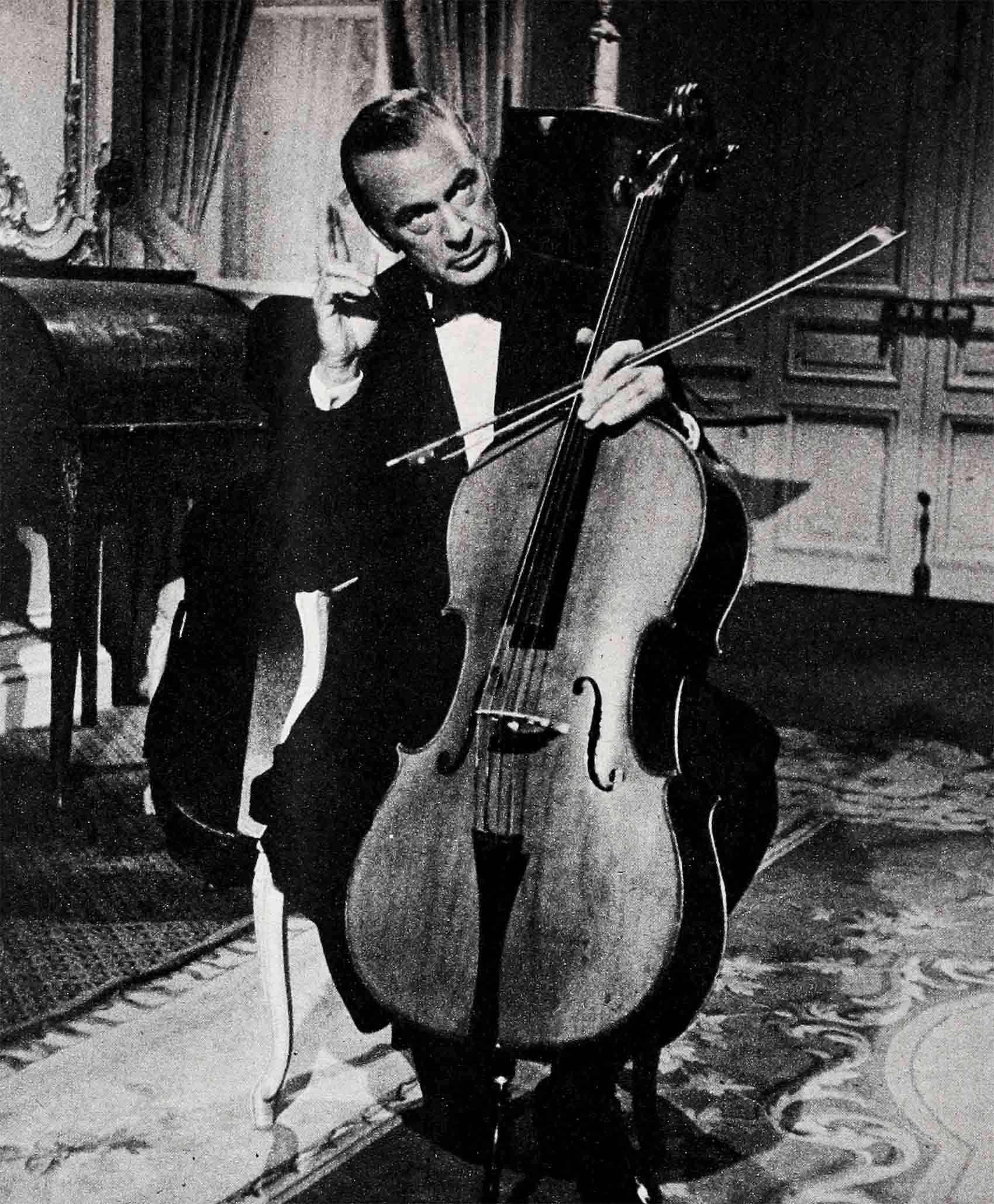
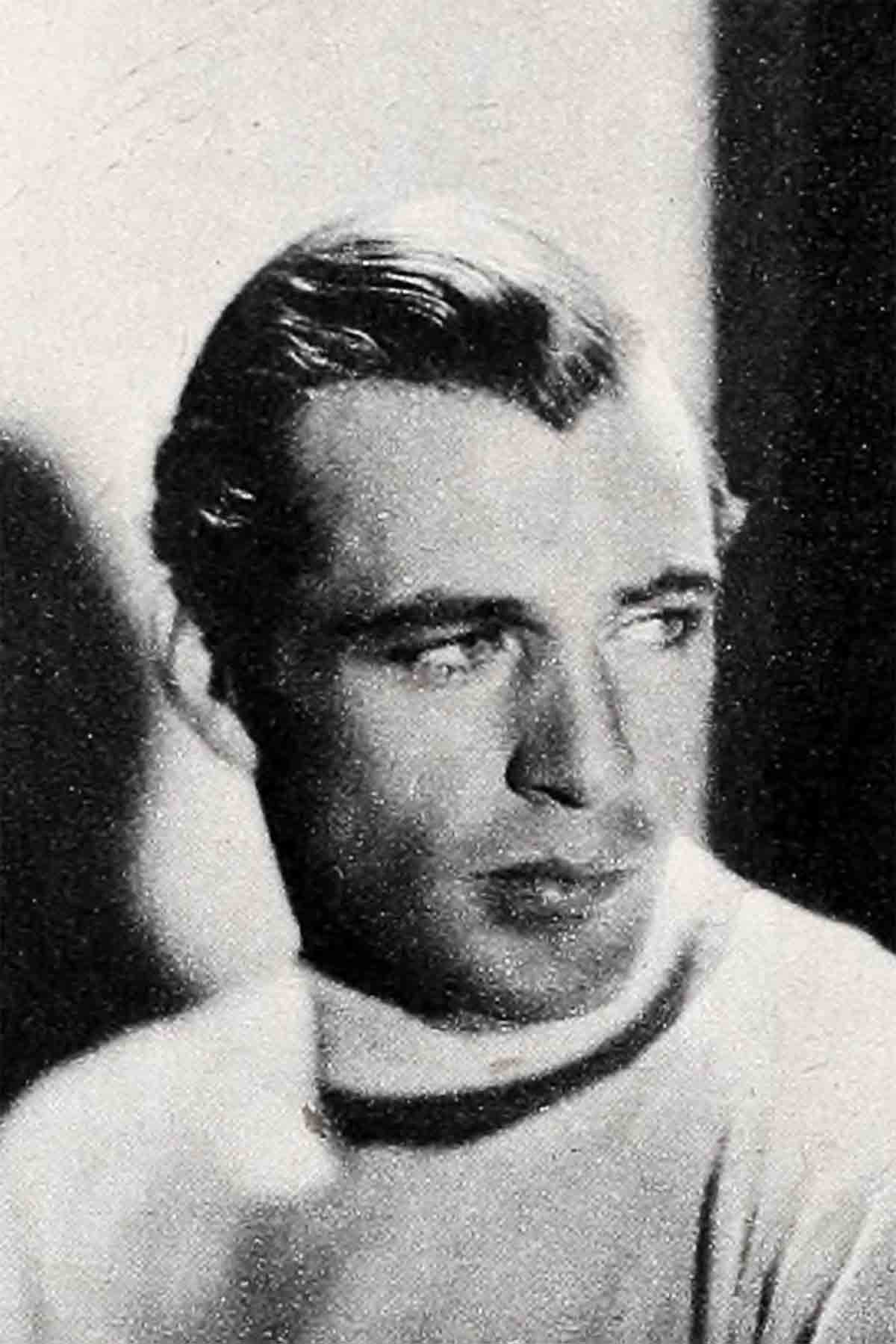
Establishing a friendship with Kate was never the easiest thing to do, but the pattern eventually became clear. Return the invariable opening barrage, fire salvo for salvo, stand your ground and hope for the best. Her introduction to longtime pal George Cukor is a good example. Ace woman’s director Cukor was scheduled to handle “A Bill of Divorcement,” and invited Kate to have a look at the costume designs. Still clad in the blue suit and pancake straw hat, Kate sniffed disdainfully at them. “Not quite the sort of thing a well-bred English girl would wear, I’m afraid.”
“No?” inquired Cukor. “And what do you think of what you’re wearing now?”
“I think it’s very smart.”
“Well I think it stinks!”
Under Cukor’s expert guidance—and 8 with co-star John Barrymore alternately teaching, teasing and swearing at her— Kate scored a personal triumph. Then began a rigid pattern of hit or miss. If she had a part that was suited to her own unique personality, it would click. “Morning Glory” (remade this year as “Stage Struck”) won Kate an Academy Award, the first of seven Oscar nominations to date. “Little Women” won her plaudits—so did “Alice Adams” (directed by George Stevens, another longtime pal), “Stage Door” and “Holiday.” The remaining nine films, out of the fourteen she made before 1940, were flops—from distinguished failures like “Mary of Scotland” to out-and-out lemons like “Break of Hearts.”
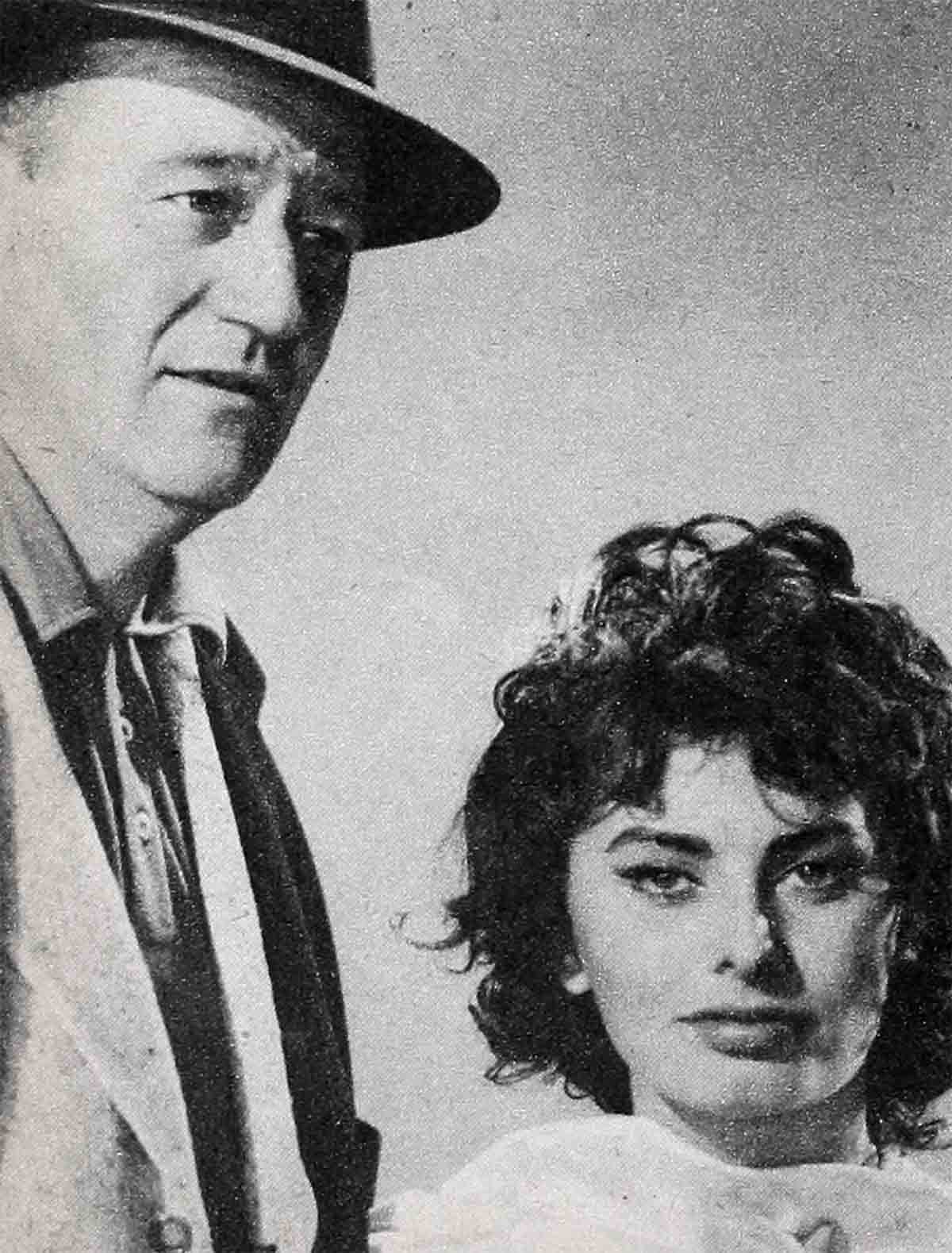
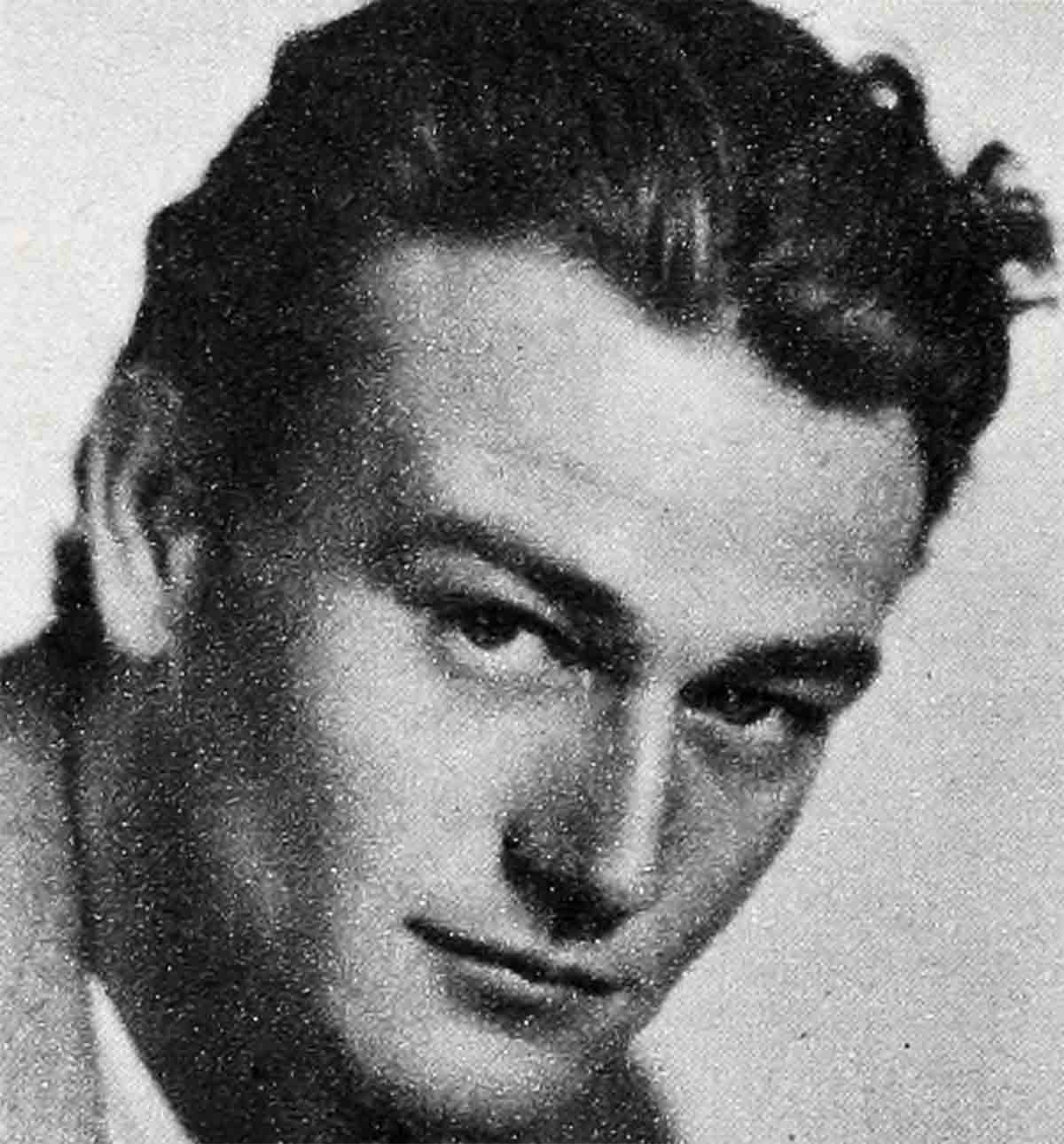
It was in 1938 that Kate was labeled “box office poison” and RKO barely bothered to conceal its displeasure. Having flopped on Broadway and flopped in Hollywood, Kate bought out of her contract (at a total cost of $220,000) and went home to Connecticut to think things over. Down to the Hepburn home came playwright Philip Barry. In the usual tradition of Kate’s lasting friendships, their original association had been a good omen. Having been given the ax during the tryout of a previous Barry play, Kate had gotten him on the phone and laced into him with no holds barred, freely spicing her tirade with some colorful little words (at the use of which she is no slouch). Barry was livid. “They’re right about you,” he shot back. “Nobody with your vicious disposition could possibly play light comedy! I’m glad they threw you out!”
He had some ideas for a play that he thought might be right for her. As Barry outlined the plot, Kate became enthusiastic, and in the eventual writing, he tailored the role to her measurements. With script in hand, and 25% of Kate’s money invested, they made ready to roll. Having had three previous flops, Barry was in something of the same position as Kate, but “The Philadelphia Story” put them both back in business. The film version was one of the finest comedies Hollywood ever made, and Kate has not had any really serious career trouble since.
Her next film co-starred her with Spencer Tracy. “You’re a bit shorter than my usual leading men, Mr. Tracy,” was the Hepburn appraisal at their first meeting. “Don’t worry, Miss Hepburn” was the cool reply. “I’ll soon cut you down to my size.” Needless to say, they’ve been staunch friends ever since, did their eighth co-starring stint in 20th Century-Fox’s “The Desk Set.”
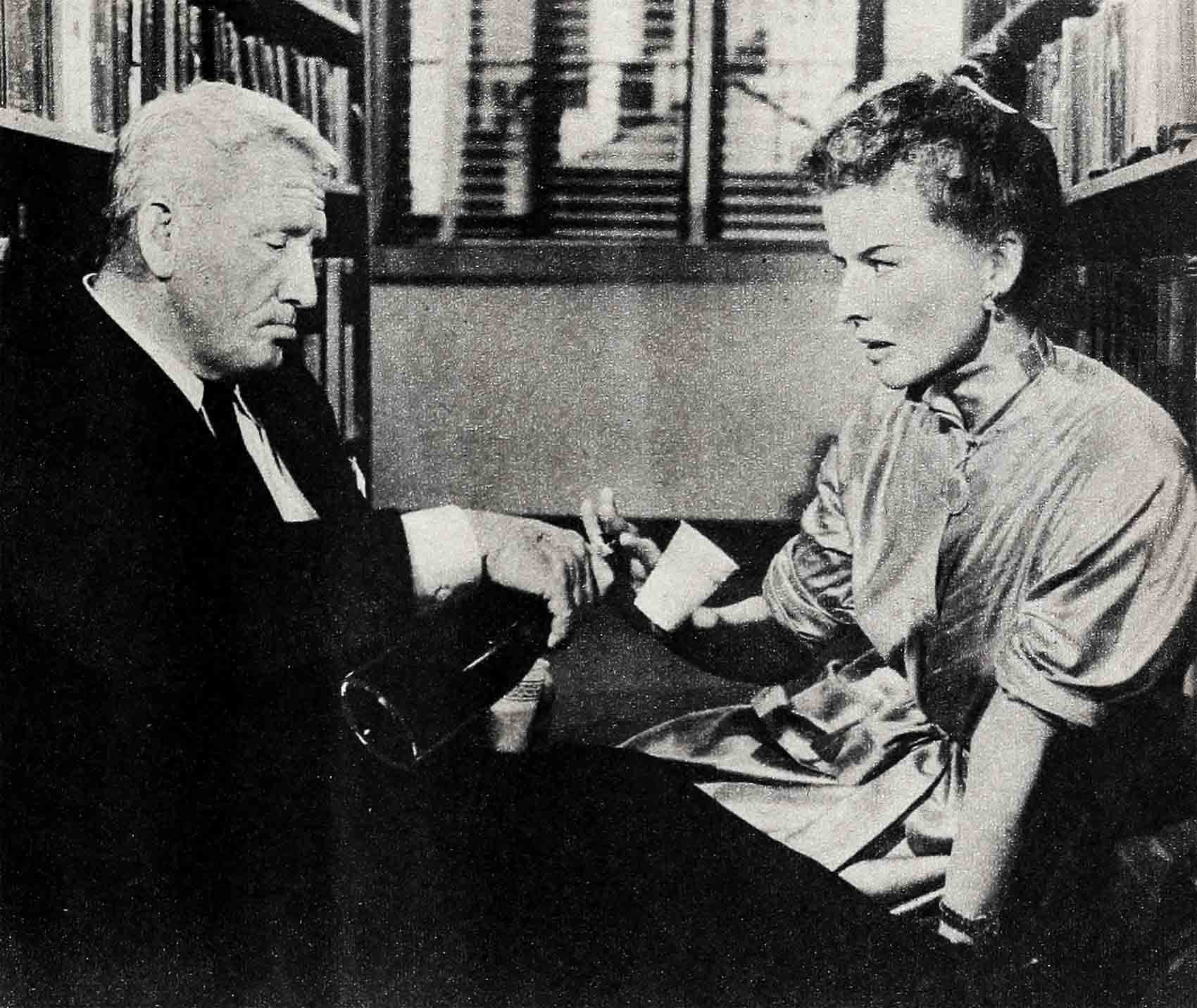
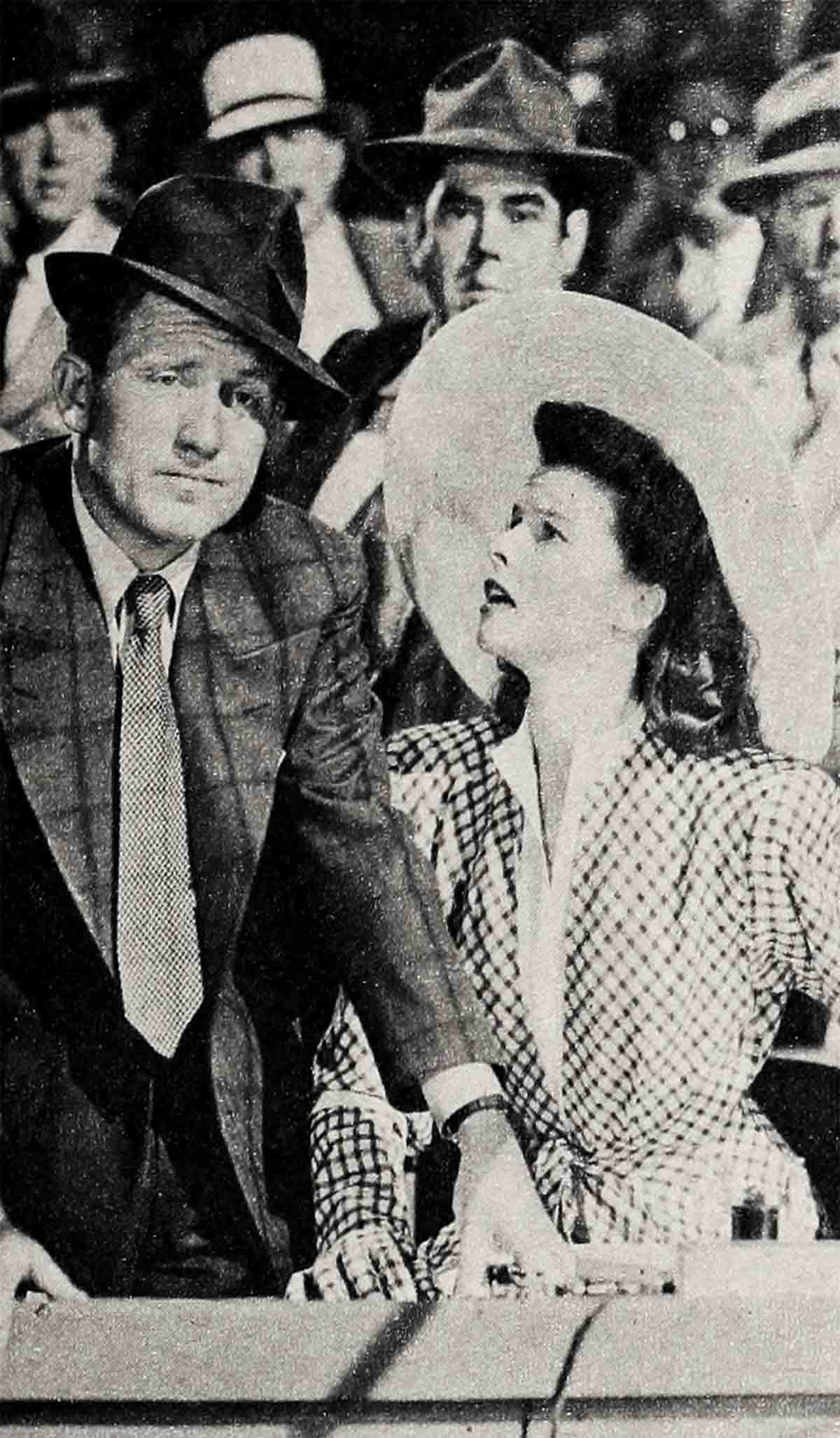
As far as Kate is concerned, phony glamour can still go climb a tree and publicity is still something to be avoided whenever possible. And under certain circumstances she is still no great picnic to work with. But this is Hepburn. And she is still most adept at playing proud and unyielding women suffering agonies from within. “Summertime” and “The Rainmaker” were two recent examples, and boxoffices the country over played a merry tune. As far as the public is concerned, no one is about to holler “Stop the music!” for a good many years to come.
Like Katie, Susan Hayward also has a strong career drive. But in a town where basic career drives are regarded as basic equipment, Susan’s really has stood out.
Born Edythe Marrener, a native of Brooklyn, she had enjoyed some success as a model before being summoned to Hollywood by Selznick in the great search for a Scarlett O’Hara. As an eventual reject for the great “Gone with the Wind” part, she was in the same company as Norma Shearer, Paulette Goddard, Miriam Hopkins, Joan Bennett, Jean Arthur, Bette Davis and a slew of others.
Which was just dandy—except that they all had careers and she didn’t. Broke and dejected, she was on the point of leaving Hollywood when Warners offered her a tentative contract. Five months later, Susan had posed in a wide variety of cheesecake but she had yet to appear in a film, and Warner Brothers let her go. Six lean months passed and then she got a small feminine role in Paramount’s otherwise all-male “Beau Geste.” How she handled it was a vivid indication of things to come.
The great day of shooting arrived. This was the golden moment she’d prayed for. “Roll ’em,” ordered director William A. Wellman, and Susan proceeded to give it everything she had. “Cut!” screamed an astonished Wellman. “Ye gods!” he exclaimed, thunderstruck. “They’ve sprung a red-headed Bette Davis on me!” A longterm Paramount contract followed, after which Susan sat around on her hands and was advised to “be patient.” What happened next has two versions.
According to one, she was out on a tub-thumping jaunt for an up-coming Paramount product. It was an exhibitor’s convention, and Susan had just spoken her pretty little piece and sat down. With a gallant gesture, the gentleman next at the microphone inclined in Susan’s direction and wondered something about “why we don’t see this pretty girl in more pictures.” That was as far as he got. Susan rose to her full five-feet-three-and-a-half and flung down the gauntlet. “Perhaps,” she challenged, fixing an unwavering eye on the studio representative, “you’d like to tell these gentlemen why they don’t see me in more pictures!” The other version has Susan grabbing the mike and launching into a hard sell for herself. Whichever was the case, things began to happen after that.
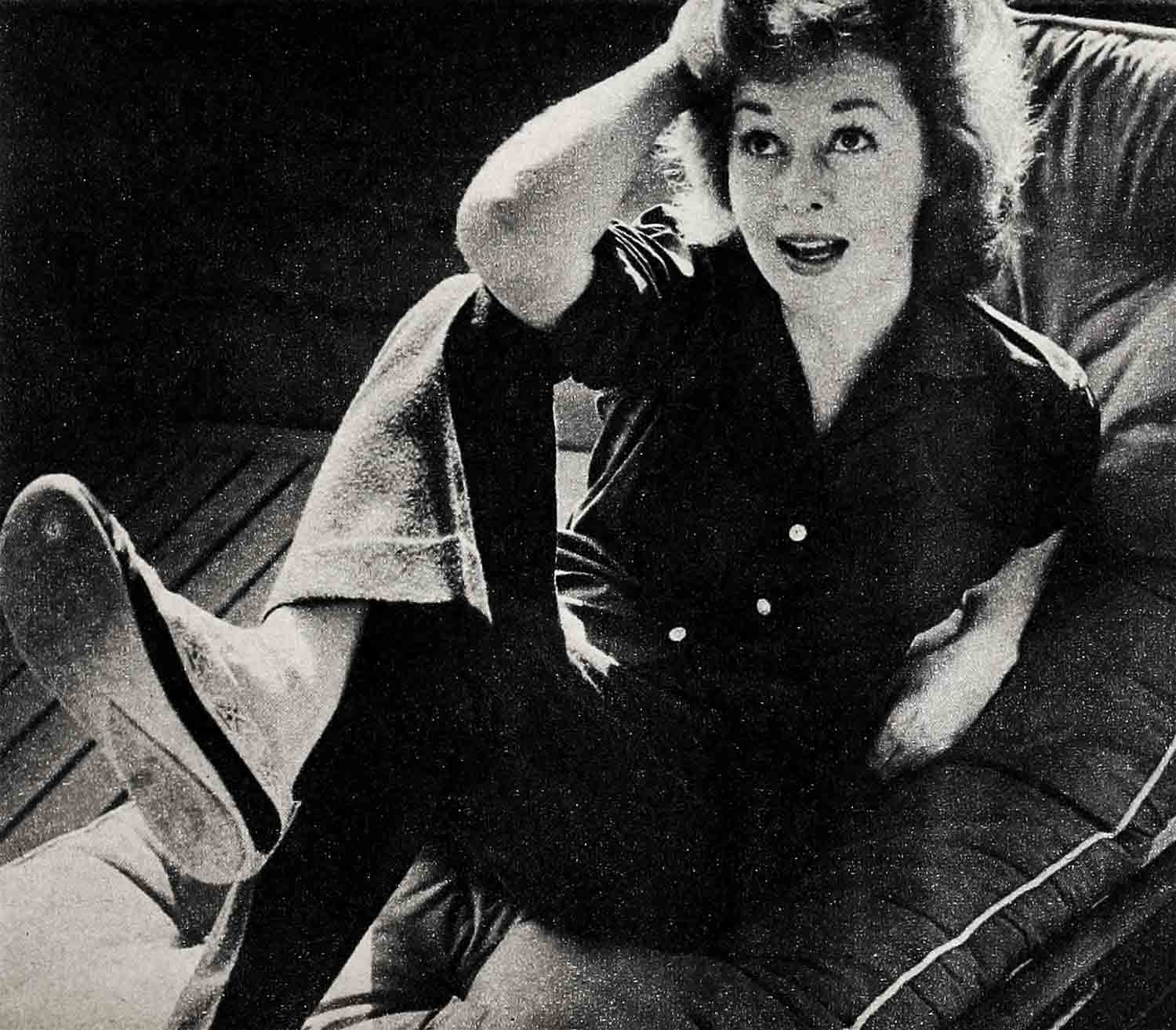
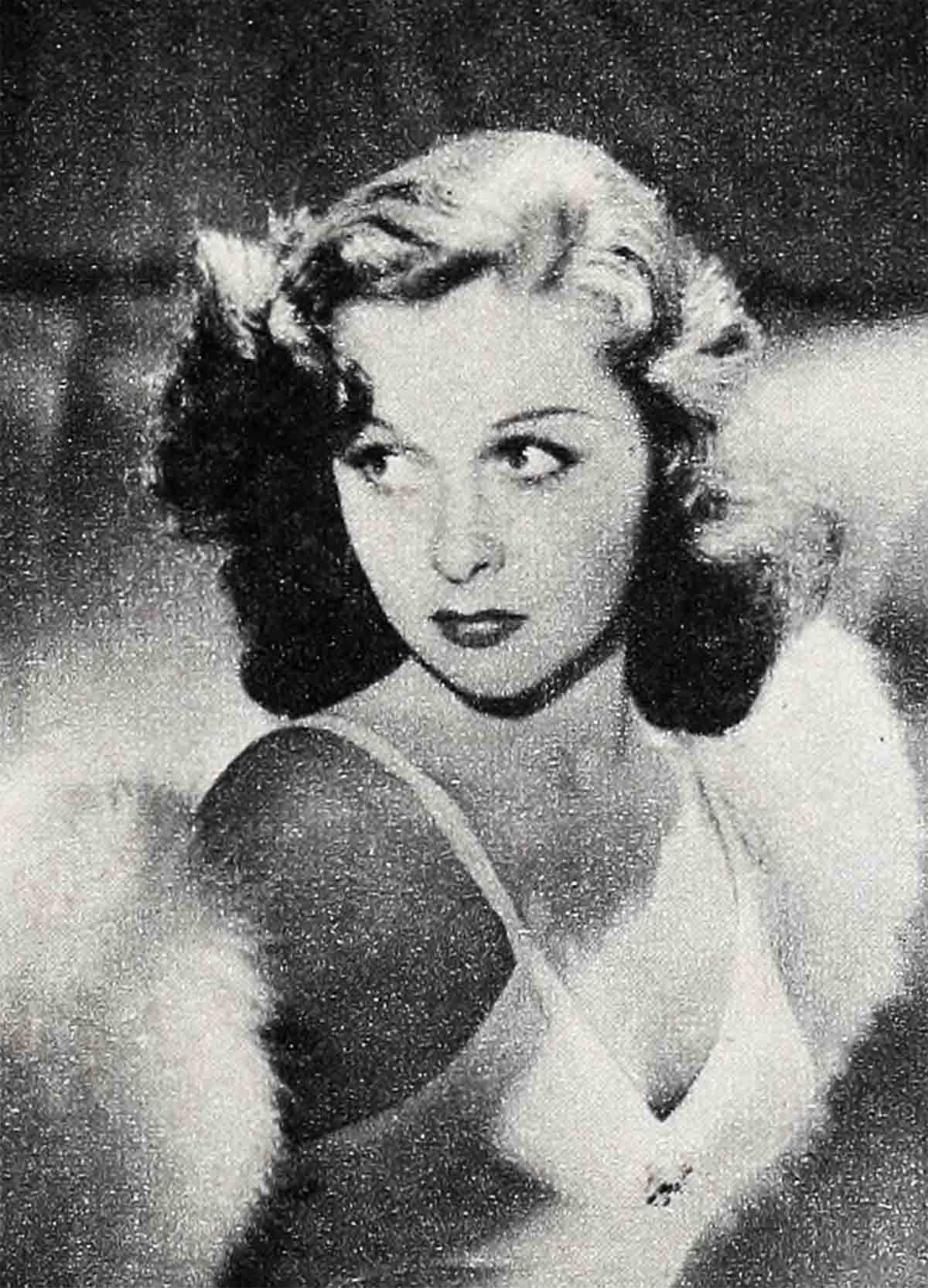
She was loaned to Columbia for “Adam Had Four Sons,” in which she made something of a sensation as a lusty wench. Then began the long climb to stardom in a succession of pictures. Some of them were fair to good: most of them were fair to awful. Perceiving the fine talent that was slowly developing, Walter Wanger placed her under personal contract. As a lady lush in “Smash-Up—The Story of a Woman,” she hit the big time. It brought her the first of four Oscar nominations (the others were for “My Foolish Heart,” “With a Song in My Heart,” which also won a Photoplay Gold Medal award, and “I’ll Cry Tomorrow”). Shortly thereafter, Darryl Zanuck, of 20th Century-Fox signed her at a fantastic figure to a seven-year no-option contract.
At that point, she had definitely arrived—now she could afford to relax that intense career drive. But if anything, things got more intense. There was a stormy Brooklyn upbringing for one thing. And all those turkeys she had struggled through—that wasn’t going to happen again. Other memories rankled. During the making of one film, she was supposed to be knitting. The star of the picture shot a suspicious glance at Susan’s knitting needles, and turned to the director. “What is she doing with those things?” demanded Miss Big Shot. “Knitting,” was the reply. “Not in my scene she isn’t!” And she didn’t.
Other times when good Hayward footage wound up on the cutting room floor because it made Gloria Gorgeous look sick by comparison—that wasn’t going to happen again, either. Even as a series of good pictures took her to the top, Susan began jealously guarding her career as if there were no tomorrow. Intermittent marital explosions didn’t help either. Her behavior completely baffled one co-star, whom we’ll call Joe Smith. “One day it’s ‘Hiya, Joe’—the next day it’s ‘Mr. Smith.’ I can’t figure that Hayward girl out.”
As each time she went up for an Academy Award, and failed, rumors of her unpopularity in Hollywood grew stronger.
Then, what little personal happiness was left blew up, in one of the messiest, most relentlessly publicized divorces Hollywood ever saw. Lurid, ugly details were ladled out in a never-ending procession of stories. “Serves her right,” chorused a body of cast and crew members who had felt the stinging lash of the Hayward tongue. She had few defenders, and when another affair landed her on the front pages, it must have seemed as if her whole world was caving in. Her suicide attempt revealed the depths of desperation at which she had arrived, and shocked all Hollywood. Finally, mercifully, everyone shut up.
Then “I’ll Cry Tomorrow” was released. She didn’t win an Oscar, but there were other awards, which hailed her, and rightfully so, for making the grade as a topflight actress. The Cannes International Film Festival gave her its annual prize as the world’s best actress. And the public signified its emphatic approval by making “I’ll Cry Tomorrow” the fifth Hayward flicker to gross over four million dollars.
Since then there’s been the so-so “Top Secret Affair,” remarriage, and a subsequent vacation from Hollywood to think things over. She’s still young, an actress in top form whose best years may lie ahead. With so much unpleasantness behind her, she may choose to sit it out awhile before returning. Or she just might retire permanently. The decision, quite naturally, is hers.
Although innumerable people have pointed out that glitter and glamour are by-products of a career—not ends in themselves—hundreds of youngsters still throng to Hollywood with starry visions of their names in lights uppermost in their minds. To some people, swimming pools, mink, dazzling premieres and the like are still synonymous with a movie career. They have apparently never heard of Spencer Tracy.
After a sensational stage success in “The Last Mile,” Fox brought him to Hollywood, launched him in a torrent of “B” products. Even then his work held the promise of better things.
Three years after he arrived, however, everything went haywire. A devout Catholic and a married man with two children, he nevertheless went off the deep end. Possibly discouraged by a career that was going nowhere, he “went Hollywood” with a vengeance—extramarital fling, the bottle, the works. The Bad Boy of Hollywood, they called him. Unruly and sullen, he would disappear for days at a time. These things are mentioned because 1) when Photoplay published the original story, Spencer was candor itself, as he has been in all of his press relations and 2) out of all this emerged a fresh awareness of himself as a person and as an actor.
M-G-M picked up the pieces, started him as leading man for their glamour queens. With “Fury,” that searing study of mob violence, came his big chance. While the fans were still raving over that one, Spencer won new laurels as the kindly priest in Metro’s “San Francisco.” He had hesitated to play that part.
“I’m a Roman Catholic and you know the thing that happened not long ago. I wouldn’t have the crust to play a priest,” he told director “Woody” Van Dyke. “I’ll make you eat those words,” was Van Dyke’s reply. And he did. With “San Francisco,” Spencer hit the top, and two Academy Awards in the next two years—for “Captains Courageous” and “Boys Town” (as Father Flanagan)—clinched it.
Film favorites being human, the saying “Into each life some rain must fall” applies to them as well as to anyone else. Some of them have had veritable floods—but it’s never stopped them. They all possess the ability to pick themselves up off the floor and get going again with a minimum of self-pity. Two tenacious examples are Ingrid Bergman and Joan Crawford.
Nineteen fifty-six will go down as the year of the grand reconciliation—the year that Ingrid Bergman and an adoring, still-loyal American public finally got together again. That second Academy Award voted her last March added the final touch. She had emerged triumphant from a scandal of truly international proportions.
For many years, to people everywhere, the depth of her artistry spoke more eloquently than words. Then came scandal—and disgrace.
“They put me on a pedestal—they thought I was a saint,” she wept pleadingly. “I’m not a saint; I’m just a human being.” But as America’s uncrowned royalty, film stars had certain obligations. And one of them was to set an example. Unfortunate, but there it was.
Nor did the affair end in one screaming blast of headlines. It was to drag on, with intermittent intensity, for seven long years. Other stars had been involved in ugly scandals, had either perished in the angry fires of public condemnation or been exonerated. But not Ingrid. For her there was not so much anger as the baffled hurt of a love that had somehow gone wrong. To those who condemned, that hurt ran deep. But they still loved her.
A constant flow of newspaper and magazine articles, plus numerous items in the columns, never let the matter rest. Once it was brought into the U.S. Senate. Last summer, TV’s Ed Sullivan was caught in a withering crossfire of controversy about it which, to judge from repeated statements, upset him more than his near-fatal automobile accident. In January, Ingrid decided to call a showdown.
The New York Film Critics had awarded her their annual prize for her performance in 20th Century-Fox’s “Anastasia.” She had chosen to accept it in New York—thus ending a seven-year, self-imposed exile. “They will probably have some questions to ask,” she commented upon boarding the plane in Paris. “Well—I will have the answers.” Flying over the Atlantic, what must she have been thinking as she prepared to open this new chapter in her life?
Thinking perhaps of another trans-Atlantic trip, when she had first been brought to America from her native Sweden by David O. Selznick, star-maker supreme. He had expertly guided her career, from her debut in “Intermezzo” through “Dr. Jekyll and Mr. Hyde,” “For Whom the Bell Tolls,” “Casablanca,” “Spellbound” and others. “Gaslight” won her an Oscar, but all her portrayals were equally vibrant.
Then she left Selznick, and her career began to slide downhill. Inferior material was largely to blame. She left for the stage, won awards as Joan of Arc. The film version—a ponderous, creaky affair—was chiefly distinguished by her inspired performance. Restless and dissatisfied in Hollywood, Ingrid looked to Europe where the new realism was all the rage in films. That, she told herself, was something she might like to try. Eventually, she got her chance.
Now it was seven years later, and the plane was landing in New York. Ingrid walked down the ramp to be greeted by a wave of joyous affection she had not known even at the height of her previous popularity. After all the bitter words, the pros and cons, rationalizations and sizzling emotions, Ingrid’s personal behavior was finally recognized for something it has always been—a private matter of conscience.
Joan Crawford, both personally and professionally. has more than once picked herself up off the mat and kept going. “The Movie Star de Luxe, the rags-to-riches Cinderella, the Lady Bountiful gowned by Adrian,” a columnist once wrote of her, “I have always felt that the greatest performance of Crawford’s career is Joan Crawford.” It is true that with her tremendous consciousness of the responsibilities and obligations of film fame, Joan has maintained a glamour facade perhaps unexcelled by any other star. But there is much more to the Crawford story than glamour.
Joan Crawford is truly one of the genuine marvels of show business—and not simply because her career is now in its thirty-second year. No other favorite has commanded such a large and loyal following on the basis of such inferior material. Of the seventy-two films she has made, only a small percentage have been unmixed blessings.
When success came in “Our Dancing Daughters,” she personally answered every fan letter, stamped and mailed them all herself. Further, she drove around Hollywood and environs snapping pictures of marquees on which her name twinkled brightly.
The Thirties brought film appearances opposite Douglas Fairbanks, Jr. and Franchot Tone—Joan’s first and second husbands. Both marriages ended in heartbreak and divorce. There were also eight co-starring stints with Clark Gable, and some tart critical opinions that she was nothing but a glamorous clotheshorse. The 1938 article on “box office poison” listed Joan, along with Katharine Hepburn and others. Ironic it is that some of her best work—in “The Women,” “Susan and God” and “A Woman’s Face”—was done after that.
But the handwriting was plainly on the wall. In 1943, having joined Metro-Goldwyn-Mayer only a year after its formation, she left at the termination of her contract. “I left by the back gate,” she remembers. “I loved M-G-M—it was home. But I longed for challenging parts and I wasn’t getting them. There were top executives who thought me all washed up.” They were not alone.
Warner Brothers signed her for two pictures, shaved her former salary by two-thirds, and gave her a bit in their all-star “Hollywood Canteen.” After reading and rejecting dozens of scripts, she voluntarily went off salary. Then producer Jerry Wald came up with “Mildred Pierce”—James M. Cain’s intense novel of mother love betrayed—which Wald thought might be right for her. Michael Curtiz was assigned to direct, and his account of the association, in the Curtiz tradition of fractured English, remains a classic.
“She was the underdog; she was down-beaten. A famous ex-star trying to fight her way back. When I start working with her, she has terrific mannerisms, thick lip rouge, big shoulder pads, and eyelashes so thick you can’t see her eye. I tell her throw away everything you have brought from other studios all these years. Even throw your lines away. You will be down to earth. She listen, she do it. Only a talented and honest actress would have listen to me.”
She listened—and got an Oscar. The fifteen films she has made since have followed a similar pattern. “Possessed” was a triumph; “Humoresque” and “Sudden Fear” were solid hits; the others were mainly average or inferior, and a few are best forgotten. Soon she will be seen opposite Rossano Brazzi in Columbia’s “Golden Virgin”—a property which other top actresses eyed before Joan snagged it for herself.
None of the indestructibles achieved overnight stardom—if indeed such a thing really exists. All served rigorous apprenticeships which perhaps explains why, after having won their spurs, they fought a little harder than most to hang on to them. No better example can be found than John Wayne.
Marion Michael Morrison was John Wayne’s name until ace action director Raoul Walsh spotted him on the old Fox Studios lot. He had served two seasons there in the prop department, and worked under John Ford on a couple of films—an association that was later to come in handy. At this particular time, 1930, Walsh was casting an outdoor epic entitled “The Big Trail.” The director took one look at Morrison’s impressive six-foot-four two hundred pound frame, plus his shaggy locks (he had intended to get a haircut that evening) and promptly cast him in the leading role.
Out went the glad news—another unknown given the chance of a lifetime. Re-dubbed John Wayne, clad in western duds with a ten-gallon hat, and with hair still creeping down over his collar, he was sent out on a cross-country trek to publicize the picture. John said “shucks” and “beggin’ yer pardon, ma’am” in all the right places and the newspapers gave him plenty of space. Another unknown had shot into prominence—a new star had been born. Only that’s not quite the way it worked out. He made two more films, in one of which the boys’ basketball team played the girls’ basketball team for a snappy grand finale. Less than a year later, under the headline “Ex-Prop’s Flash Fades,” Variety printed the sad news: Fox had dropped its option on his services.
What next followed were so many quickie westerns at various studios it’s almost impossible to get an accurate count. (Of this period, Wayne has remarked that he sometimes felt as if he were “sleeping in the saddle.”) John Ford came to the rescue with “Stagecoach.” He was determined that Wayne would play the hero, Ringo Kid, and proceeded to sell this notion to his dubious producer, Walter Wanger. Wanger agreed to make a test, and when the results were shown, got even more enthusiastic than Ford.
When “Stagecoach” was released in 1939, everyone got enthusiastic. “A new personality on the Hollywood scene,” heralded several wide-awake reviewers across the country. There was another well-received picture with Ford—“The Long Voyage Home.” Then the Hollywood leading ladies began the “everybody gets John Wayne” era. There were three appearances opposite Marlene Dietrich; subsequent films cast him with Joan Crawford, Jean Arthur, Paulette Goddard, Claudette Colbert and several others. It was step number one on a slow, steady march to box office supremacy.
1950’s “Sands of Iwo Jima” gave everyone a jolt. Not only was it a slam-bang war drama, but it contained some unexpectedly fine acting by none other than John Wayne (he received an Oscar nomination). He had never been under any delusions about his acting ability. had repeatedly and publicly given credit to coworkers like Ford for the success of his films. Like his box office appeal, his acting ability just grew.
“Sands of Iwo Jima” was the third of eight Wayne films (so far) to gross over four million dollars. The next year he took over as the King of the Box Office, has remained among the top moneymakers ever since.
As robustly rugged as Wayne is Gary Cooper, with a touch of Sir Galahad—everyone’s ideal hero—noble, virtuous, gallant and courageous. In a country where notoriety and sensationalism grab the lion’s share of publicity, simple decency is still nothing to be knocked lightly. Gary Cooper’s thirty-year reign at or near the top of the box office solidly backs that contention.
Gary Cooper’s first years in Hollywood were no picnic. He seemed one great gangle of arms and legs, blushed frantically during love scenes (fled from the: set one day), and writhed with self-consciousness. But he brought a singular gift to Hollywood—the ability to keep his mouth shut when it would do the most good. Fellow actors warmed to him immediately—he made such a good listener.
THE END
—BY D. SHEPPARD
It is a quote. PHOTOPLAY MAGAZINE AUGUST 1957



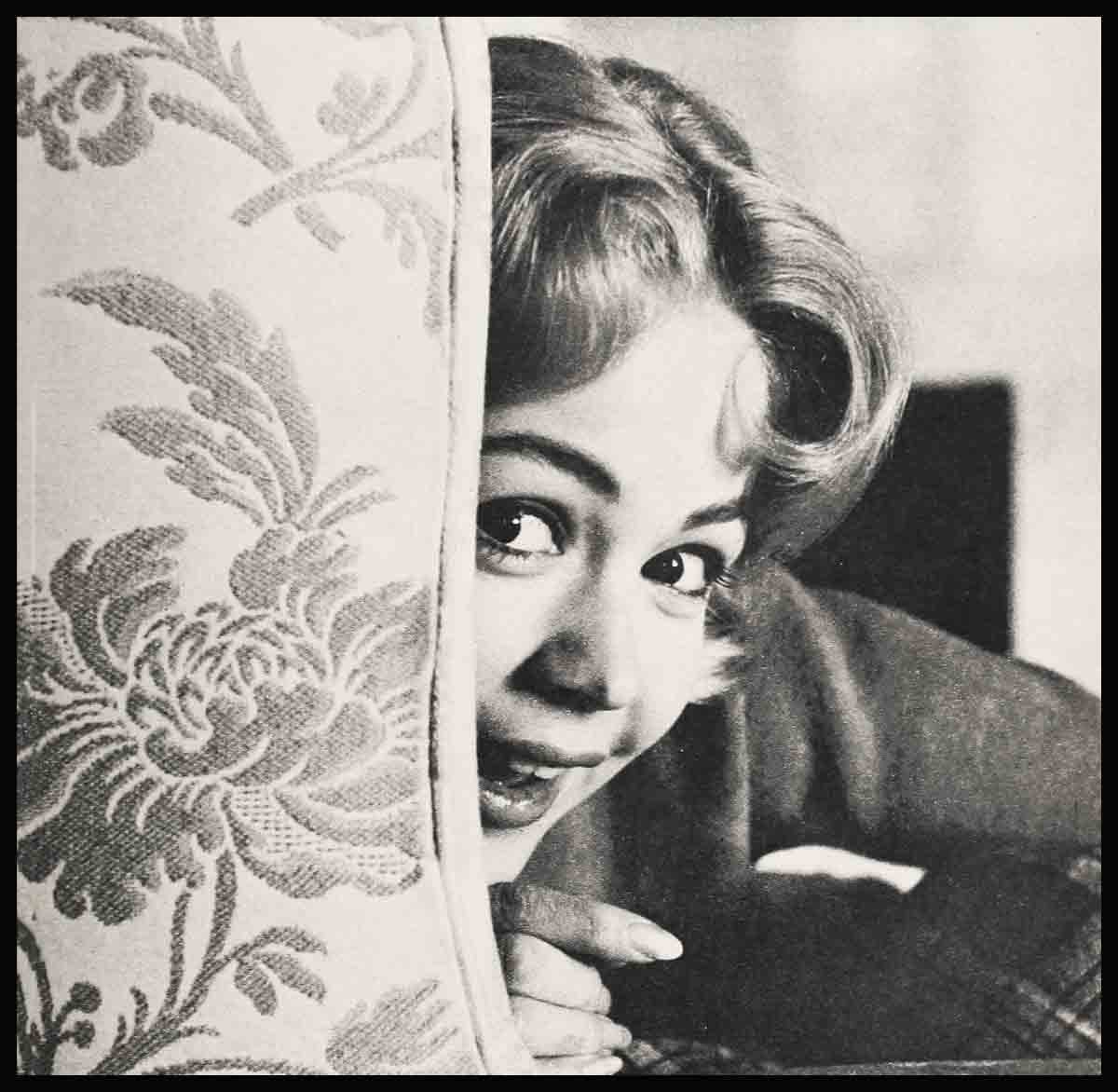
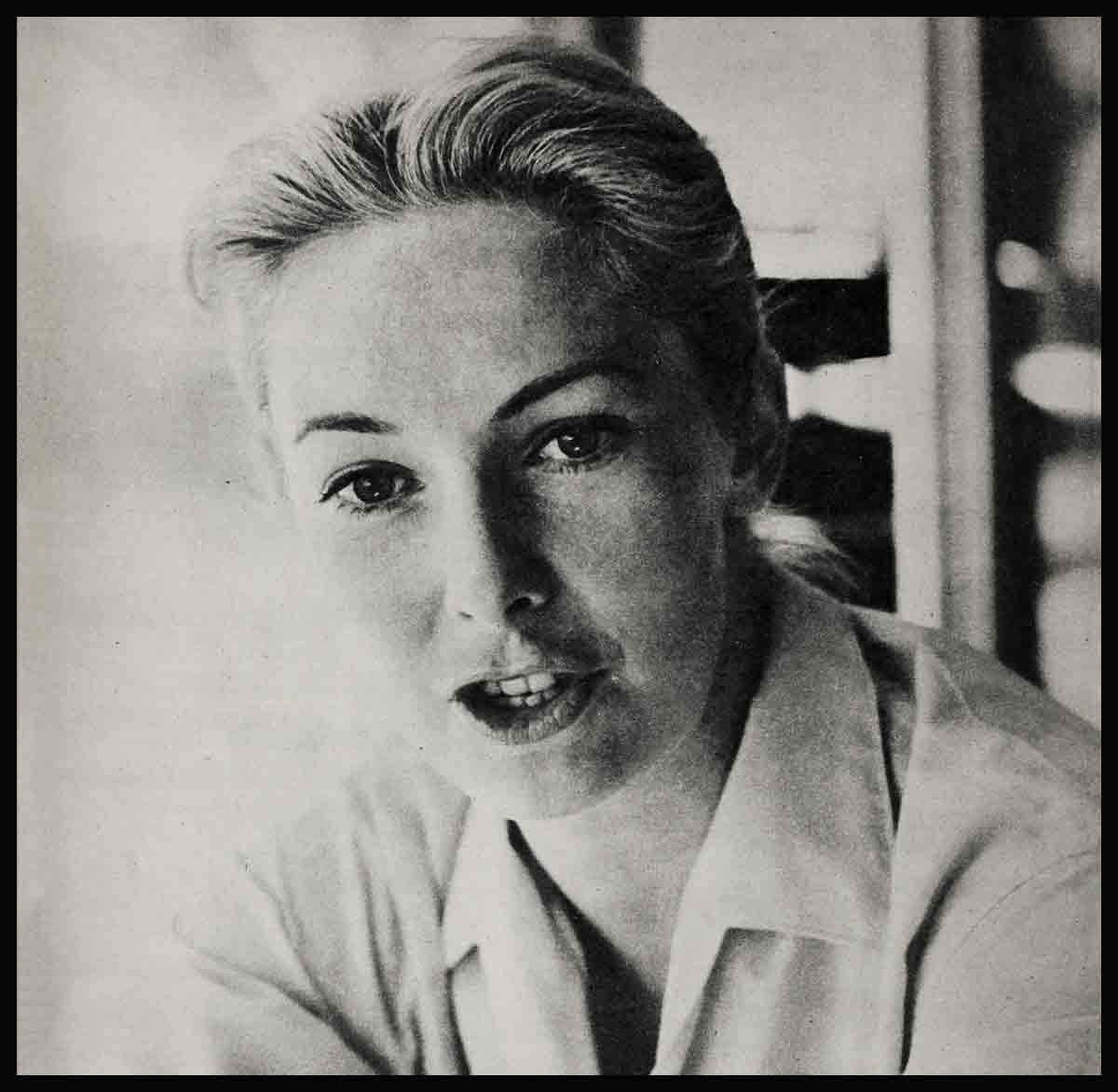
graliontorile
11 Ağustos 2023It is in reality a great and helpful piece of info. I’m satisfied that you just shared this helpful info with us. Please keep us up to date like this. Thank you for sharing.